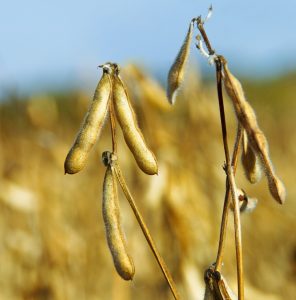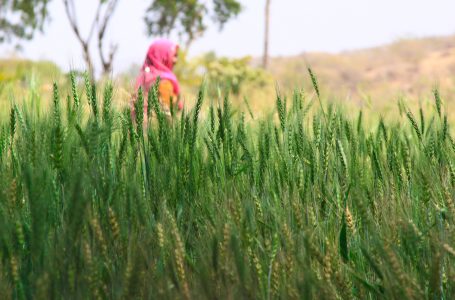Feed Commodities: Markets have been highly volatile in the past months due to recent world events. This article aims to make a short review of recent activity within such markets linked to global events.
SECOND ALL-TIME HIGH FOR AUSTRALIAN BARLEY EXPORTS A report by the U.S. Department of Agriculture’s (USDA) Foreign Agricultural Information Network (GAIN) forecasts shipments of this cereal to reach 8.5 Mt in the 2021/22 campaign.
A report by the U.S. Department of Agriculture’s (USDA) Foreign Agricultural Information Network (GAIN) forecasts shipments of this cereal to reach 8.5 Mt in the 2021/22 campaign.
![]() This would be 200,000 tons more than in the 2020/21 cycle and would become the second highest figure recorded, after the 9.2 Mt sent in the 2016/17 campaign.
This would be 200,000 tons more than in the 2020/21 cycle and would become the second highest figure recorded, after the 9.2 Mt sent in the 2016/17 campaign.
This significant exports volume would occur despite the tariffs that China began to apply on Australian barley (commodity) in May 2020. 
![]() With a strong global demand for feed grains (commodities), which is expected to continue in 2022, Australia adapted quickly diversifying its exports to a wide range of destinations.
With a strong global demand for feed grains (commodities), which is expected to continue in 2022, Australia adapted quickly diversifying its exports to a wide range of destinations.
![]() Barley production (2021/22) could become the third largest in history, with 13 Mt, despite the decrease of 100,000 tons if compared with the 2020/21 cycle.
Barley production (2021/22) could become the third largest in history, with 13 Mt, despite the decrease of 100,000 tons if compared with the 2020/21 cycle.
![]() The other significant cereal whose demand could increase, especially in feed, is wheat. It could reach a record production of 34 Mt and a maximum in exports of 25.5 Mt for the 2021/22 campaign.
The other significant cereal whose demand could increase, especially in feed, is wheat. It could reach a record production of 34 Mt and a maximum in exports of 25.5 Mt for the 2021/22 campaign.

According to FAO, total cereal exports are projected to be slightly below average in 2021/22 as a floating export duty system for wheat, corn and barley would be in place from June 2, 2021, replacing the flat export duty system enacted at the end of January 2021.
| In addition, an 11 Mt quota for cereal exports to countries outside the Eurasian Economic Union (EAEU) for the period from 15 February to 30 June 2022 would have been approved on 17 December 2021.
In addition to this, an 11 Mt quota for cereal exports to countries outside of the Eurasian Economic Union (EAEU) would have been approved on December 17, 2021 for the period comprised from February 15 to June 30 2022 .
|
![]() Such measures aim to ensure an adequate availability of staple foods within the domestic market and avoid price increases in commodities. Following the decrease in production in 2021(75.94 Mt and -11.6%), wheat shipments, which would represent 80% of total Russian exports on average, are expected to reach 34 Mt. Standing slightly below the five-year average.
Such measures aim to ensure an adequate availability of staple foods within the domestic market and avoid price increases in commodities. Following the decrease in production in 2021(75.94 Mt and -11.6%), wheat shipments, which would represent 80% of total Russian exports on average, are expected to reach 34 Mt. Standing slightly below the five-year average.
![]() Similarly, barley exports are expected to be below the 4.3 Mt average.
Similarly, barley exports are expected to be below the 4.3 Mt average.
 On the other hand, corn exports are forecast at a slightly higher level than the average value of 4.5 M.
On the other hand, corn exports are forecast at a slightly higher level than the average value of 4.5 M.
![]() As a result, cereal exports during the 2021/22 campaign would total 43 Mt, lower than the average of the last five years.
As a result, cereal exports during the 2021/22 campaign would total 43 Mt, lower than the average of the last five years.
 The U.S. Department of Agriculture’s (USDA) Foreign Agricultural Service (FAS) report on Brazil’s oilseeds places the area planted with soybeans for the 2021/22 campaign at 40.4 Mha (+1.4 Mha compared to the 2020/21 cycle) and production at 136 Mt (-1 Mt).
The U.S. Department of Agriculture’s (USDA) Foreign Agricultural Service (FAS) report on Brazil’s oilseeds places the area planted with soybeans for the 2021/22 campaign at 40.4 Mha (+1.4 Mha compared to the 2020/21 cycle) and production at 136 Mt (-1 Mt).
![]() This season’s planting would have started with optimism, with most soybeans planted on time compared to last year.
This season’s planting would have started with optimism, with most soybeans planted on time compared to last year. 
![]() Consequently, the soybean export forecast (2021/22) has also been reduced, totaling 88 Mt (-0.5 Mt compared to 2020/21).
Consequently, the soybean export forecast (2021/22) has also been reduced, totaling 88 Mt (-0.5 Mt compared to 2020/21).
![]() For the 2021/22 campaign, estimates of this oilseed’s processing stand at 46 Mt, with a soybean meal production of 35.5 Mt (-0.5 Mt) and 9.2 Mt (-0.1 Mt) for soybean oil.
For the 2021/22 campaign, estimates of this oilseed’s processing stand at 46 Mt, with a soybean meal production of 35.5 Mt (-0.5 Mt) and 9.2 Mt (-0.1 Mt) for soybean oil.
![]() The crushing projection would be driven by domestic demand for soybean oil. However, it is projected to decline when the biofuel mandate is reduced to 10% during this year.
The crushing projection would be driven by domestic demand for soybean oil. However, it is projected to decline when the biofuel mandate is reduced to 10% during this year.
![]() With China’s strong demand for Brazilian soybeans(commodities), stocks would reach an all-time low, at 1.26 Mt (-0.2 Mt compared to the 2020/21 cycle).
With China’s strong demand for Brazilian soybeans(commodities), stocks would reach an all-time low, at 1.26 Mt (-0.2 Mt compared to the 2020/21 cycle).
 The Foreign Agriculture Service (FAS) of the United States Department of Agriculture (USDA) has published a report in which it places projections for wheat production in India for the 2021/22 cycle at 109.5 Mt.
The Foreign Agriculture Service (FAS) of the United States Department of Agriculture (USDA) has published a report in which it places projections for wheat production in India for the 2021/22 cycle at 109.5 Mt.
![]() Estimates for wheat production remain unchanged from the previous ones, but represent an increase of 1.7 Mt compared to the 2020/21 campaign.
Estimates for wheat production remain unchanged from the previous ones, but represent an increase of 1.7 Mt compared to the 2020/21 campaign. 
![]() The latest planting report from India’s Ministry of Agriculture and Farmers’ Welfare estimates the sowing of the next wheat crop through December 31, 2022 at 32.59 Mha compared to 32.91 Mha from last year.
The latest planting report from India’s Ministry of Agriculture and Farmers’ Welfare estimates the sowing of the next wheat crop through December 31, 2022 at 32.59 Mha compared to 32.91 Mha from last year.
![]() On the trade side, wheat shipments (2021/22) are expected to rise to 6.5 Mt based on current strong export demand and relatively competitive prices for Indian wheat in neighbouring markets.
On the trade side, wheat shipments (2021/22) are expected to rise to 6.5 Mt based on current strong export demand and relatively competitive prices for Indian wheat in neighbouring markets.
![]() As for the final wheat stocks in the 2021/22 cycle, they have been revised at a low, with 23 Mt. A figure which is much lower than the 27.3 Mt for the 2020/21 campaign.
As for the final wheat stocks in the 2021/22 cycle, they have been revised at a low, with 23 Mt. A figure which is much lower than the 27.3 Mt for the 2020/21 campaign.
| The revision would be based on new official stock estimates and the projection of higher wheat consumption, with 107.3 Mt (+4.6 Mt), accompanied by an increase of 0.5 Mt in the use of wheat in feed. Reaching 7 Mt for the 2021/22 campaign. |









